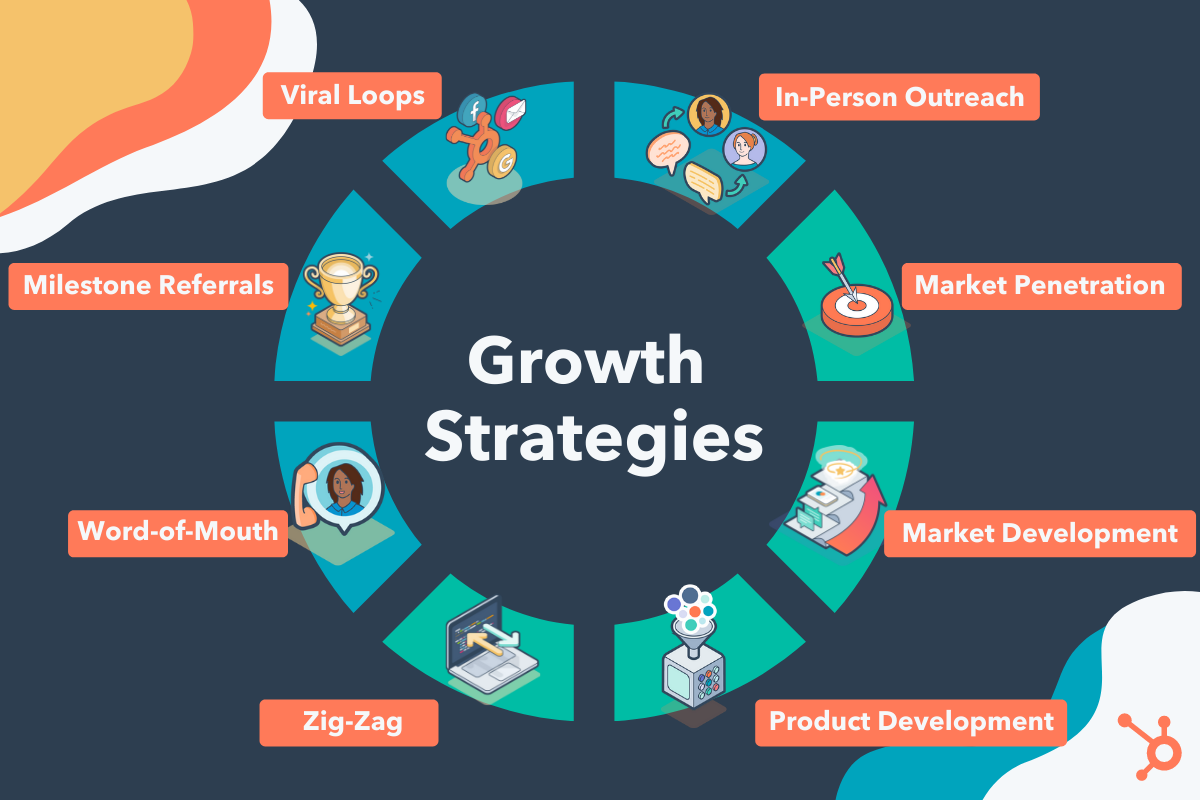Growth should be a top priority in your business’s first five to ten years. But it doesn’t happen just by working hard.
Growth should be a top priority within the first five to ten years of a business — It is what drives profit and makes you competitive with similar businesses in your industry. However, growth doesn’t happen just by working hard. Like most goals, you need a strategic plan, complete with KPIs and benchmarks along the way. Here are three ways that I found effective not just for mapping out growth goals, but actually achieving them:
Before you can map out a strategy for growth, you need to decide on your own personal definition of growth. The meaning of growth is not universal for every business. Your organization is unique and is more positioned to hit certain growth goals over others.
However, it never hurts to take inspiration from high-performing competitors. Examine the growth goals of other businesses in your industry, and consider how well they might overlap with your business.
Be careful, though—I can guarantee that simply swiping the growth goals of one of your competitors is not going to work out very well for you. You need to adjust it to make it a realistic goal for your company. Otherwise, you are setting yourself up to fail.
IS YOUR NEW BUSINESS READY TO GROW? TAKE THESE 3 STEPS FIRST
What kind of growth goals should you be choosing? Again, that depends on your company and what kind of success you value the most, but a few common ones would be gaining clients and customers, visibility, media coverage or increased sales.
2. Line up your strategy your business goals
Take a minute to consider and potentially resolidify how you define success for your business. What metrics matter to you? What objectives do you want to accomplish on your given timetable? These could include profitability, number of clients, number of repeat customers, social media metrics or whatever benchmarks you feel are indicators of a job well done.
Now, with some time passed since your growth strategy was set in place, evaluate how it is measuring up to your outlined business goals.
Your growth strategy is there to help you deliver on these and scale part or all of your business accordingly.
If your business goals and your plan to succeed at those goals aren’t aligned, guess what? You are inevitably going to fail at them.
“But I’ve already committed to this growth strategy!” So, what? Commit to a new one. And if you do this experiment again in a month (which you should) and decide that you need to adjust them again, then adjust them again. It is your business and your success on the line here. Do not let failure come from being set in stone on goals that you have the power to change.
3. Rely on your team and keep them involved
Your team is the most effective tool you have to help you achieve your business growth goals. Keep your team heavily involved in your decisions, and have frequent touchpoints at the beginning of the process, allowing them to provide you with valuable feedback and insight into day-to-day tasks that could help or hinder the progress of established goals.
Better yet, establish the goals with their input. Coming up with them together not only gives you added brainpower when mapping out success, but it gives you insight into what your team thinks are important growth goals and what they feel they are capable of achieving. Also, you should involve them in any changing or shifting of the goals. And most importantly:
Hold them accountable for anything they commit to but don’t meet.
You do not have to reinvent the wheel all by yourself. Your team, your business partners and your network are all valuable resources at your disposal to help you grow and scale your business. Ask for their input and suggestions before making any new marketing or strategic decisions.
A WOMAN REVEALS WHY SHE WAS NOT ABLE TO DATE ANOTHER MAN AFTER 3 YEARS OF DIVORCING HER HUSBAND
Strategy is the key to spurring growth within your company. Without it, all goals are aimless, unstructured and ultimately unsuccessful. You won’t know how to measure growth and success unless you are first able to define what it means to you. The definition of growth isn’t universal — you need to create one that’s realistic for your organization. Once you’ve plotted out goals, pair them up with your current strategy and evaluate how the established strategy will help you meet those goals.
Goals are the finish line, so create a strategy that helps meet them. Do not define goals that are easy to accomplish just because you don’t want to change your approach. And finally, remember to rely on people who are just as invested in your company’s success as you are.
Your team and business partners will be your biggest asset in helping you achieve the goals you’ve set for yourself.
Owning a business means constantly trying new things until you find a reliable way to scale and grow. And once that stops working, you need to be willing to go back to the drawing board and do it all over again. No successful business has ever coasted on a stagnant strategy.
They’re adapting to modern times, working all the necessary angles and finding new ways to be leaders in their space. Those goals should be your goals too.








